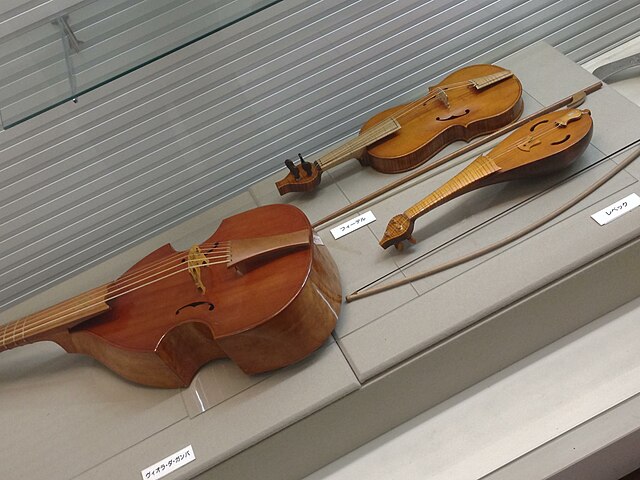The tube zither is a stringed musical instrument in which a tube functions both as an instrument's neck and its soundbox. As the neck, it holds strings taut and allows them to vibrate. As a soundbox, it modifies the sound and transfers it to the open air. The instruments are among the oldest of chordophones, being "a very early stage" in the development of chordophones, and predate some of the oldest chordophones, such as the Chinese Se, zithers built on a tube split in half. Most tube zithers are made of bamboo, played today in Madagascar, India, Southeast Asia and Taiwan. Tube zithers made from other materials have been found in Europe and the United States, made from materials such as cornstalks and cactus.
Modern form of tube zither among highland minority groups in Cambodia, Vietnam and Thailand. It may be held against the chest. This particular instrument is the kong ring គង់រេង, which can substitute for a chorus of gongs, quietly.
Sihanaka woman in Antananariv, Madagascar playing a valiha, pre 1912 A.D.
Musician Wukir Suryadi of the Indonesian band Senyawa plays a modernized tube zither. Instead of pegs to tighten metal strings, the instrument has a guitar-style head with mechanical tuners.
A Sundanese celempung.
In musical instrument classification, string instruments or chordophones, are musical instruments that produce sound from vibrating strings when a performer plays or sounds the strings in some manner.
Bow Harp or Harp Lute, West Africa
Hellenistic banquet scene from the 1st century AD, Hadda, Gandhara. Lute player far right.
Spanish stele of a boy with a pandura.
Viol, fidel and rebec (from left to right) on display at Amakusa Korejiyokan in Amakusa, Kumamoto, Japan








